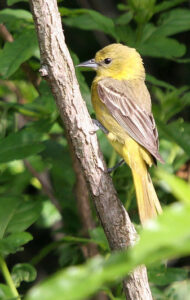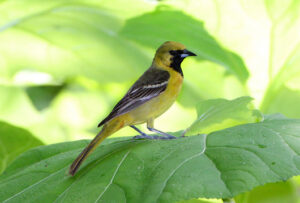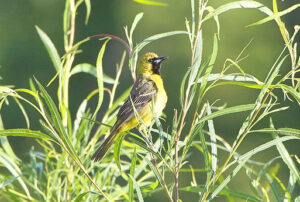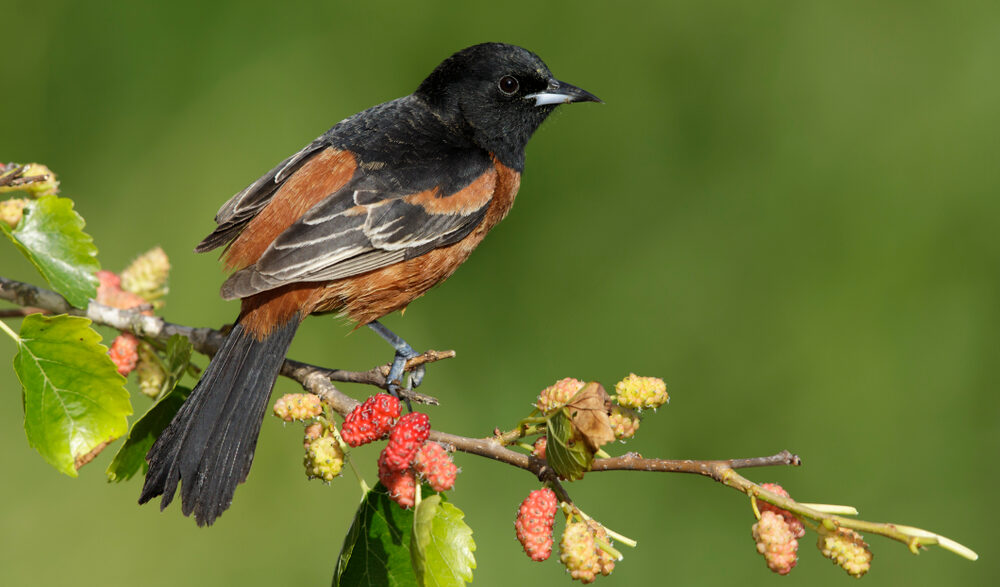Orchard Oriole, Icterus spurius
Bill Rowe
While birding around the edge of a woods, along a hedgerow, in streamside willows, or among old fields with scattered small trees, you may hear a fast, disjointed burst of song coming at you from somewhere in the foliage—a mix of sweet whistles and guttural chatter that would be impossible to put words to. You’re hearing an Orchard Oriole, the “other” oriole of eastern North America, a common bird but less familiar to the general public than the Baltimore, which specializes more in tall shade trees and sings just a few simple clear whistles. Nationwide, we have five widespread orioles, a far cry from the rich variety in the tropics, to which these five all return for the winter. (Two other species make it across the Mexican border on a year-round-resident basis, but only in extreme south Texas.) Our breeding Orchard Orioles arrive in late April and May along with the bulk of other neotropical migrants, but they depart sooner than most, with many of them on the move—often in family groups—in July, and nearly all of them gone by the end of August, which means that we actually host them for only a third of the year. (Note that this is one good illustration of why July is not nearly as dull and static for birds as we sometimes think.) The Orchard’s nesting range extends to the western margin of the Great Plains in Colorado, etc., and down to central Mexico, while in winter it lives from southern Mexico and Central America into northern South America. There the birds may join together in large groups, including nighttime roosts in trees or dense grass—a behavior we don’t see up here, although pairs will sometimes nest close together (even in the same tree).
IDENTIFICATION: Adult males are unmistakable, with deep chestnut-red replacing the bright orange of the Baltimore Oriole. Females are yellow below and olive-gray or olive-green on the back, unlike the female Baltimore with her orange and olive-brown or blackish colors. Orchards are also smaller, just over seven inches long, leading to occasional confusion of the females with warblers and other small yellow birds. First-spring males look like females with black throat patches.
ST. LOUIS STATUS: Common in summer, in the same habitats and on the same timetable as described above. Most conservation areas and most typical farmland will have Orchard Orioles.
Learn more and listen to the songs and calls of Orchard Orioles here.

Female
Photo Credit: Al Smith


One-year-old males
Photo Credit: Al Smith




